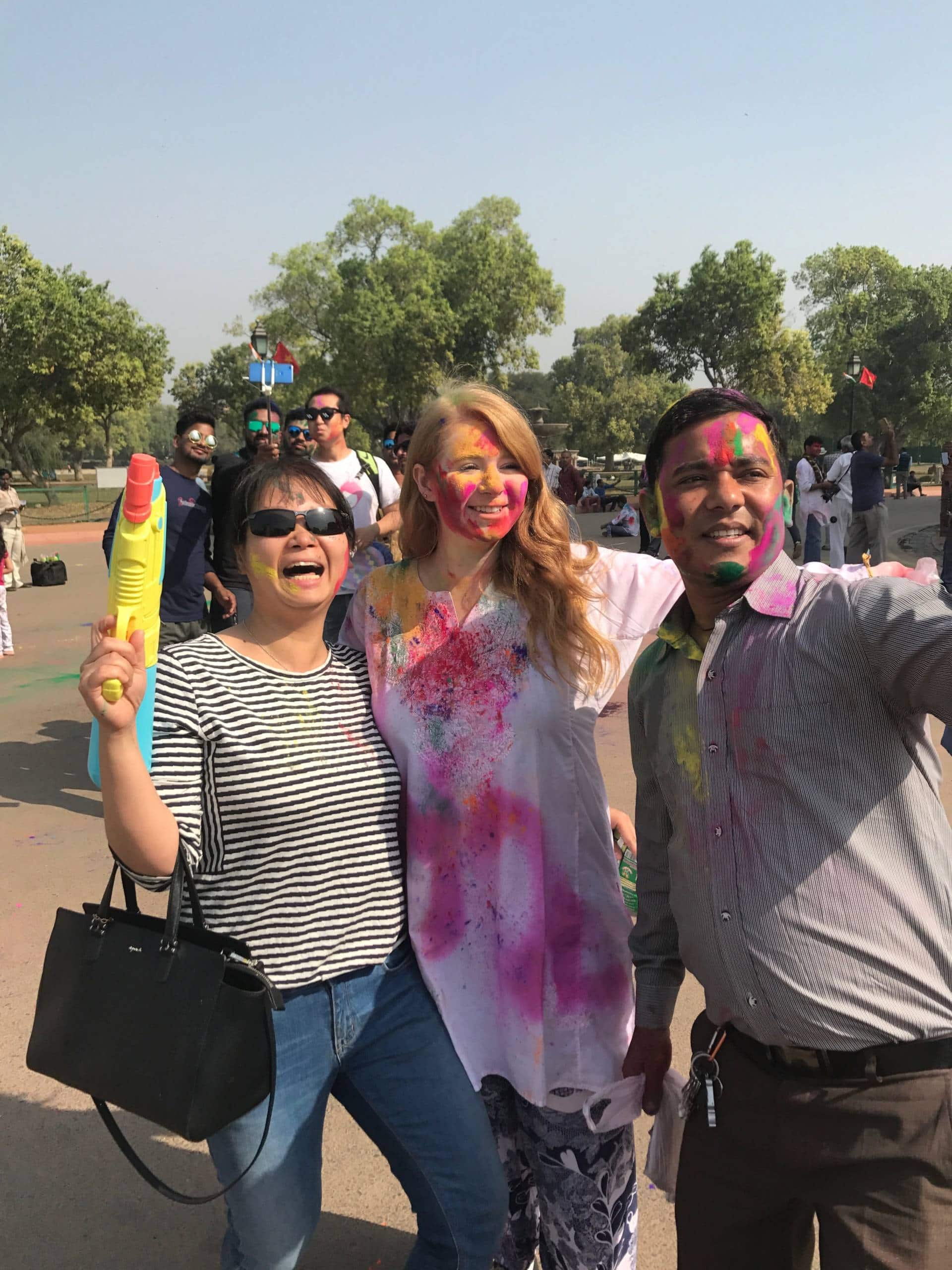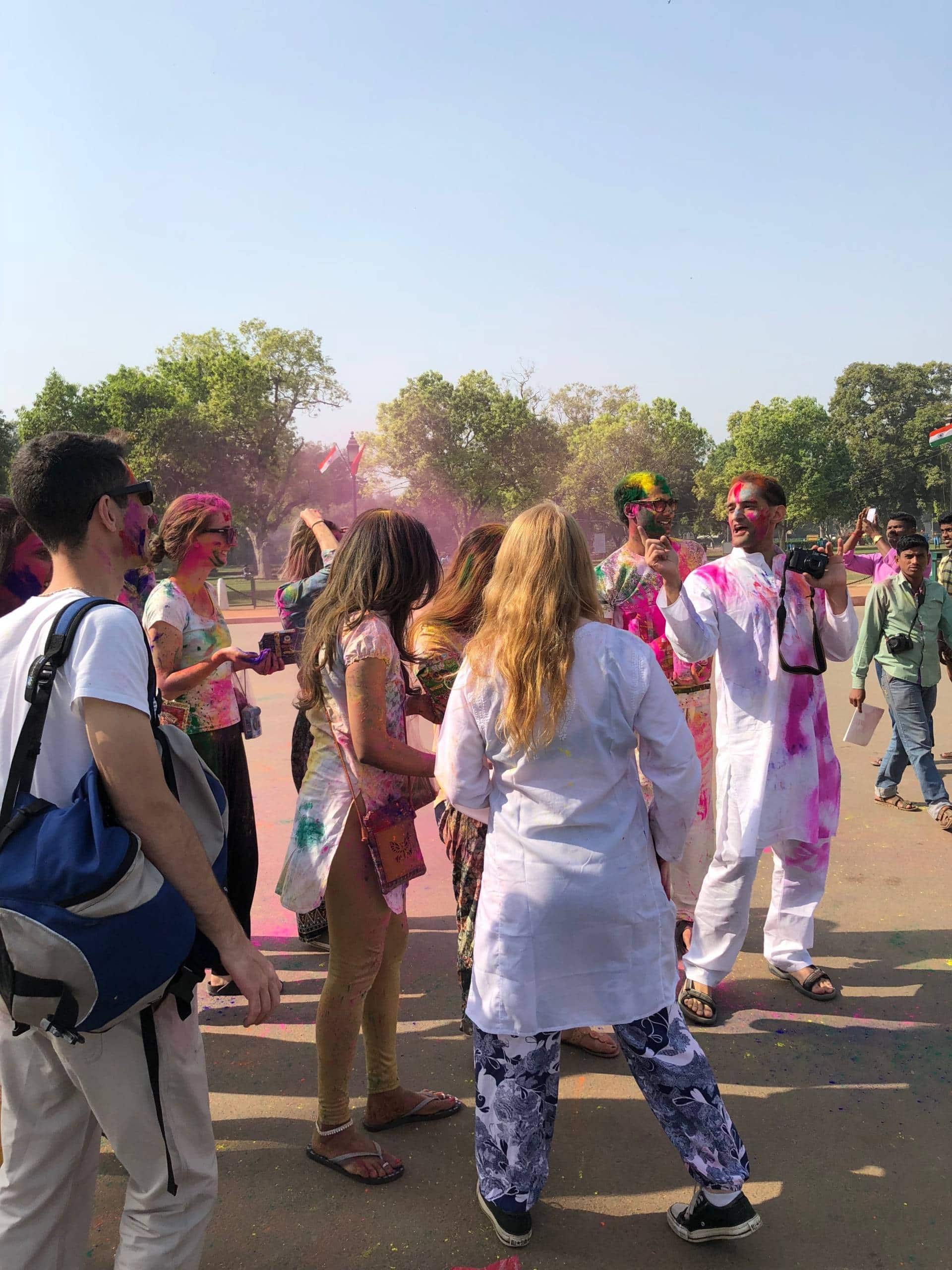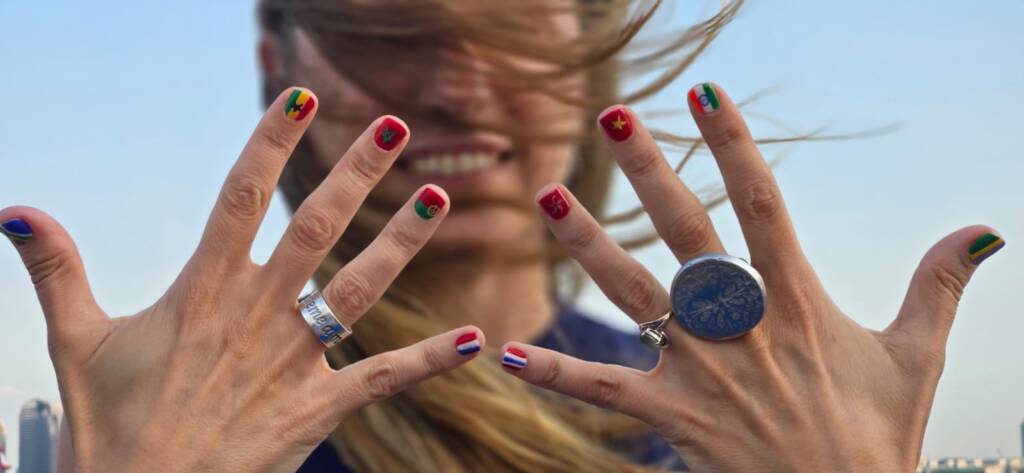On any other day of the year, Megan Hoeffler’s flaming red hair would stick out among the crowded streets of New Delhi like a rose in a garden of daisies. However, on March 2, 2018, her American features were masked by the spectrum of Holi colors splattered on her body.

Hoeffler, a junior studying human development and family studies at The University of Alabama, is a current voyager on Semester at Sea. India was the sixth port on our voyage, and Hoeffler, along with 500 other students, had the opportunity to celebrate Holi while visiting.
“I had heard of Holi before but didn’t know what it was,” Hoeffler said. “I knew it was a festival with colors, but I didn’t know its purpose or significance to the Indian culture.”
Holi, also known as the “festival of colors”, is a Hindu holiday celebrated each spring. It represents the changing of seasons and good versus evil. The festivities begin the night before Holi with the Holika bonfire where people gather to perform spiritual rituals. Everyone wakes up early the next morning to celebrate by throwing powdered color at one another. Holi is played at family gatherings, fancy parties and in the streets among the general public.
“It’s an opportunity for the entire country to let loose for a day,” Hoeffler said. “Everyone gets to close down their shops or take off work and just have fun with their family and friends.”

Historically it was an ancient religious holiday, but today many non-Hindu Indians play Holi as well. The event has become integrated into the Indian culture and is celebrated across the entire country.
“Visiting India during one of its biggest holidays was an amazing way to learn about the culture,” said Julia Baker, a sophomore studying social work at UA. “You get to see what’s important to them and how they celebrate certain aspects of their lives.”
Baker said the colorful holiday reflected the rest of her experience in India. “Even in their every day lives there is color. Every corner you turn you’ll see a woman dressed in a bright Sari.”
Hoeffler and Baker found Holi to be most similar to how Christmas is represented in America. They said the kids wait around all night too excited to fall asleep and wake up early the next morning to bags of color.
“Holi felt more free and open than holidays in the U.S.,” Hoeffler said. “People can play Holi with whomever they come across instead of celebrating separately with just their families. We had strangers come up to us and put color on our faces and hand us bags of color. That’s not something you’d see back at home.”

The UA students said they felt welcomed by the locals, and most people seemed to be excited they were there to witness the fun. They said traveling during a country’s holiday season is a positive experience if the people are open to foreigners joining in on the celebration.
“Holi is only once a year, so I thought it was cool we happened to be there for it,” Hoeffler said. “But I would say do research before to make sure you know what you’re getting into, and make sure they’re accepting of you participating.”
The evidence of Holi long remains after the day is over, and everyone returns to work and school with stained faces and rainbow hair. Baker and Hoeffler left India with a bit more color than they came with ‚Äì the result of partaking in one of the country’s most anticipated holidays, described by Baker as a “burst of life”.


